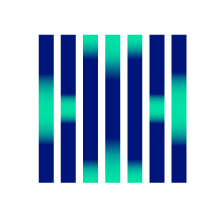3 Threat Intelligence Benefits That Are Important for Business
Digital technologies have transformed the face of the business landscape—but they also come with a dark side. Malicious actors take advantage of...
Experiencing an active breach? Call us immediately at 1-866-405-9156 UncommonX has experienced ZERO reportable breaches.
4 min read
 SOC Team of Security Experts
:
May 10, 2022 8:00:00 AM
SOC Team of Security Experts
:
May 10, 2022 8:00:00 AM

When it comes to cyberattacks, most people imagine an incident that’s short and intense. Think of script kiddies bringing down your website with a DDoS attack, or data breaches that gain access to your network to steal data.
However, the most insidious — and potentially most damaging — cyberattacks take a different form: the advanced persistent threat.
But what is advanced persistent threat detection and how can you defend your organization against APTs? In this article, we’ll discuss the definition of advanced persistent threat detection plus provide best practices for detecting and mitigating advanced persistent threats.
In cyber security, advanced persistent threats (APTs) are malicious actors that use sophisticated methods to stealthily infiltrate an information system and remain hidden for an extended period. APTs may spend this time gathering intelligence, installing ransomware or other malware, and stealing intellectual property or other sensitive data. Many APTs are sponsored by large criminal or terrorist organizations, and some are even state-sponsored (e.g. by North Korea or Iran).
Advanced persistent threat detection, then, is the task of identifying an APT threat actor that has already entered an IT system. Given that the goal of an APT attack is to remain undetected as long as possible, advanced persistent threat detection often requires knowledge and techniques that are just as sophisticated as the attacks themselves.
Advanced persistent threat actors often use social engineering tactics to trick users into revealing their security credentials. For example, “spear phishing” attacks target a specific individual by impersonating a trusted third party. Other APT attacks exploit a vulnerability in a network or software application — sometimes even before this flaw has been reported to the public.
Some of the most well-known examples of APT attacks and actors are:
Because advanced persistent threats are difficult to perceive by design, APT detection will require more sophisticated techniques than standard cyber security tools.
Want to enact a rigorous advanced persistent threat defense program within your organization? Below are some basic tips for how to detect advanced persistent threat actors:
Fortunately, not every organization has to worry about advanced persistent threats. However, at-risk businesses must enact appropriate security measures, such as advanced persistent threat detection tools.
The largest targets should think proactively, moving from advanced persistent threat detection to advanced persistent threat protection. This involves the use of threat intelligence to understand APT groups’ motivations, behavioral patterns, technical “fingerprints,” and more. These organizations should also invest in XDR or SIEM software that can collect and analyze log and network data.
Below are two indications that you should invest in advanced persistent threat detection software:
The good news is that there’s no shortage of APT defense technologies on the market. However, technology is of limited use without the expertise and experience to know how to use it. That’s why, for the strongest IT security posture, you should partner with the right IT managed services provider.
If you believe your organization could be the target of advanced persistent threats, there’s little time to waste. Speak with a knowledgeable, qualified IT managed detection and response provider who can talk through your options and help you set up a robust cyber defense program.
Looking for the right IT security partner? UncommonX is an IT managed services provider that offers a unified suite of security solutions: the BOSS XDR platform. With the BOSS platform, organizations have a powerful suite of cyber security defenses at their fingertips—everything from threat protection to incident response.
Contact our team of cyber security experts today to discuss your situation, get a security assessment, or see a demo of the BOSS platform.

Digital technologies have transformed the face of the business landscape—but they also come with a dark side. Malicious actors take advantage of...

Organizations are spending more than ever on cybersecurity—but they’re not getting safer.

I hear from IT leaders constantly about issues they face trying to protect their organizations at a time when cyberattacks are growing and evolving...